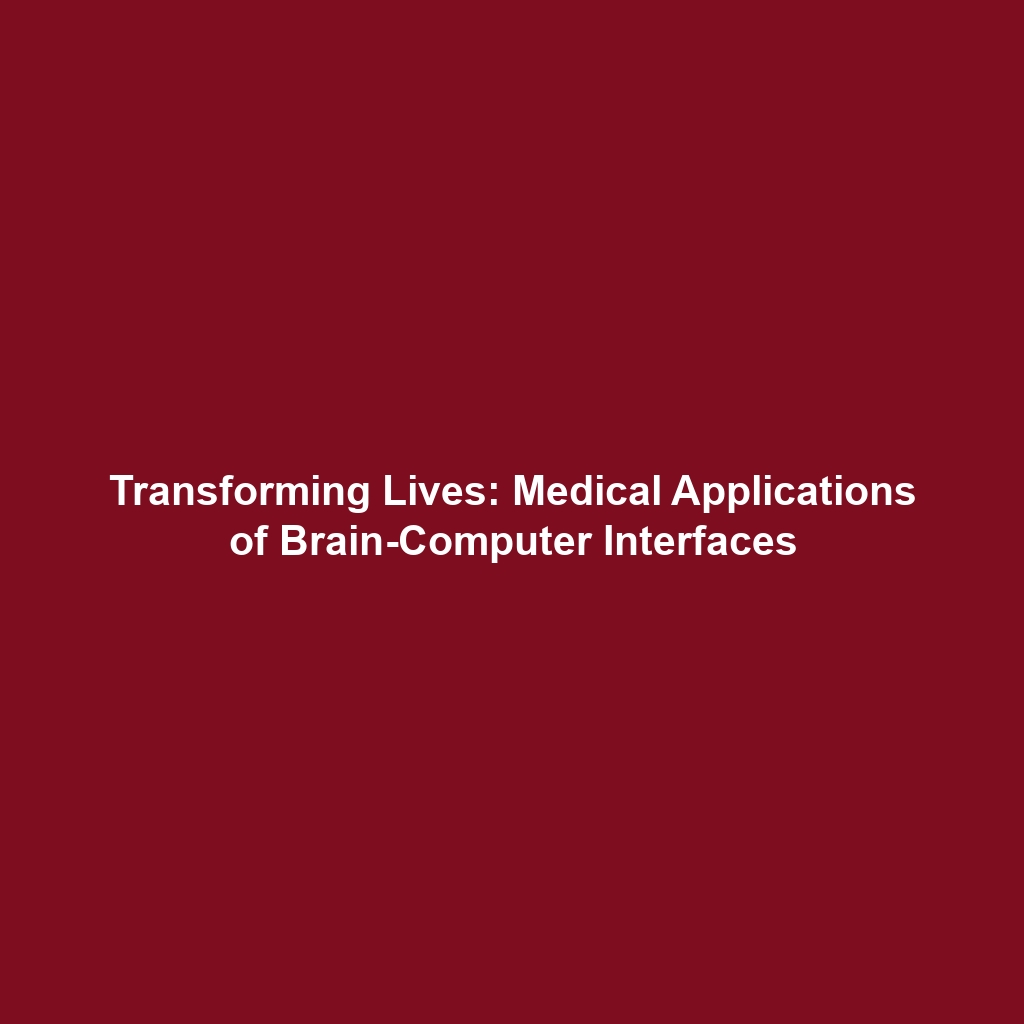Understanding Non-Invasive Brain-Computer Interfaces
Introduction
Non-invasive Brain-Computer Interfaces (BCIs) represent a groundbreaking innovation that utilizes external sensors to monitor and interpret brain activity, significantly without invasive procedures. By employing techniques like electroencephalography (EEG), these devices offer a safe and effective means to study brain functions and facilitate communication for individuals with mobility impairments. The significance of non-invasive BCIs in rehabilitation, cognitive enhancement, and direct brain interaction paves the way for transformative applications across various fields.
Key Concepts
Understanding non-invasive BCIs involves exploring several fundamental concepts:
What are Non-Invasive BCIs?
Non-invasive BCIs are systems designed to capture brain activity through sensors placed on the scalp, eliminating the need for surgical implants. The most common non-invasive methods include:
- Electroencephalography (EEG): Captures electrical activity of the brain through electrodes on the scalp.
- Functional Near-Infrared Spectroscopy (fNIRS): Measures brain activity based on hemodynamic responses.
- Magnetoencephalography (MEG): Detects magnetic fields produced by neural activity.
Principles of Brain-Computer Interfaces
BCIs operate on the principle of translating brain signals into commands for external devices. They rely heavily on signal processing techniques to filter, decode, and analyze neural data, enabling real-time interaction between the brain and computers.
Applications and Real-World Uses
The applications of non-invasive BCIs are vast and varied, enhancing the lives of many:
- Assistive Technologies: Enabling communication for individuals with disabilities by translating thoughts into speech or text.
- Rehabilitation: Aiding recovery from stroke or injury through brain-controlled prosthetics that restore mobility.
- Gaming and Entertainment: Offering immersive experiences where users control games with their brain activity.
Current Challenges
Despite their promise, non-invasive BCIs face several challenges:
- Limited accuracy and resolution compared to invasive methods.
- Signal noise and interference complicate data interpretation.
- Ethical concerns regarding user privacy and data security.
Future Research and Innovations
Looking forward, research into non-invasive BCIs is poised for exciting advancements:
- Development of advanced machine learning algorithms for improved signal processing.
- Integration of wearable technology for continuous brain monitoring.
- Exploration of hybrid systems combining multiple non-invasive methods for enhanced data accuracy.
Conclusion
Non-invasive BCIs, particularly through techniques like EEG, represent a significant evolution in the field of Brain-Computer Interfaces. Their capacity to change lives through assistive technologies and rehabilitation is profound. As innovations continue, these systems will likely play an even more crucial role in various applications, from healthcare to entertainment. For further exploration, visit our articles on applications of BCIs and future research in brain technology.

